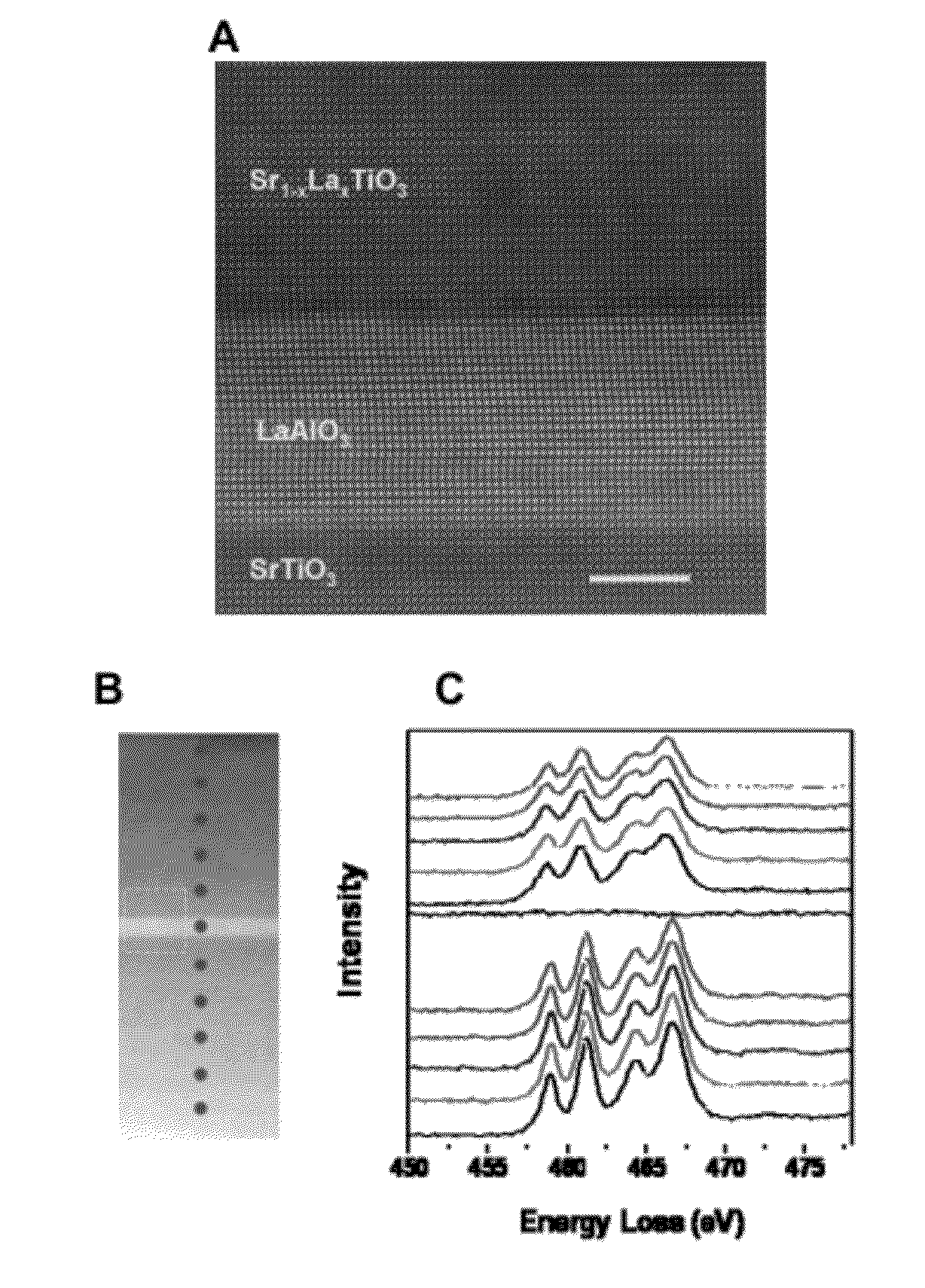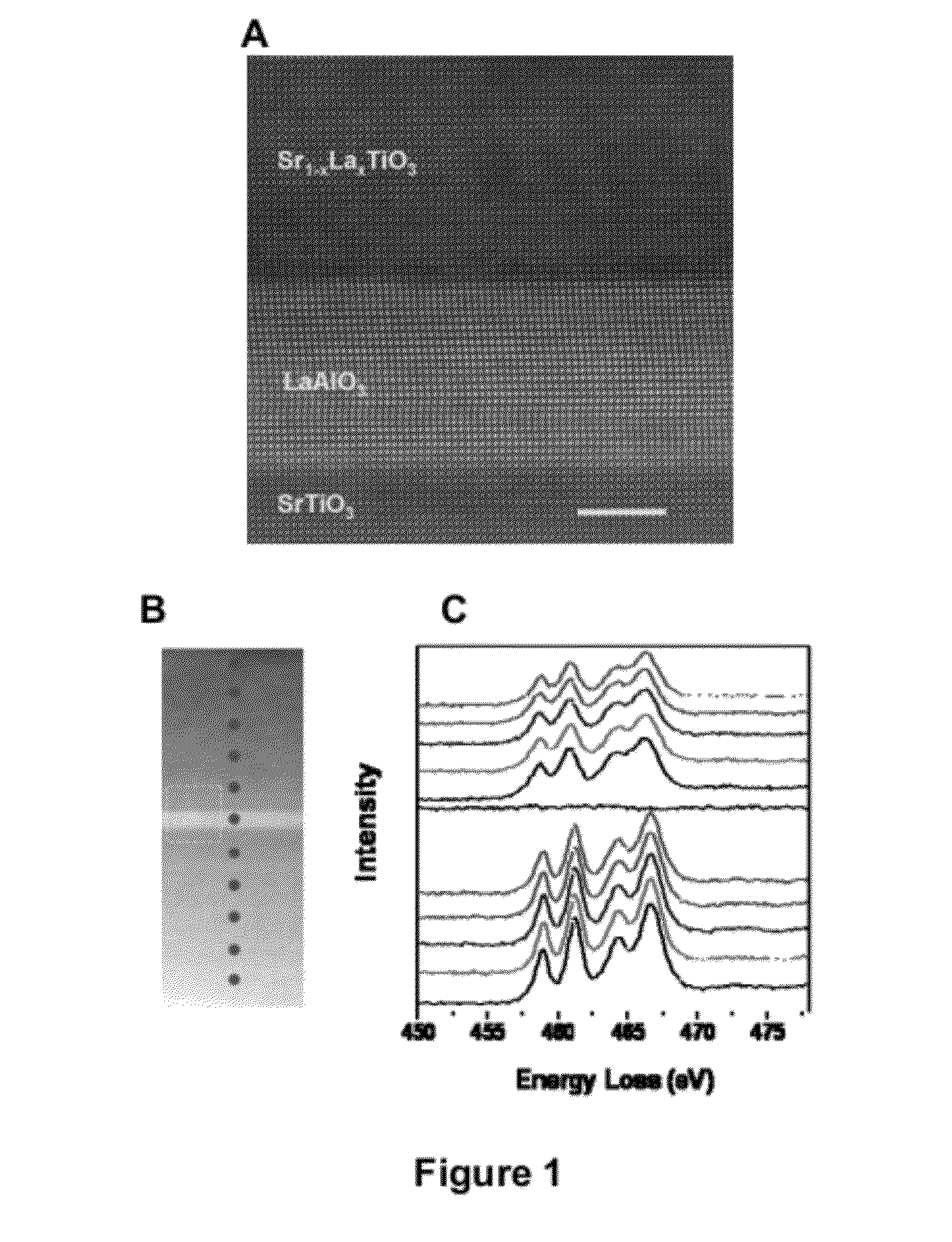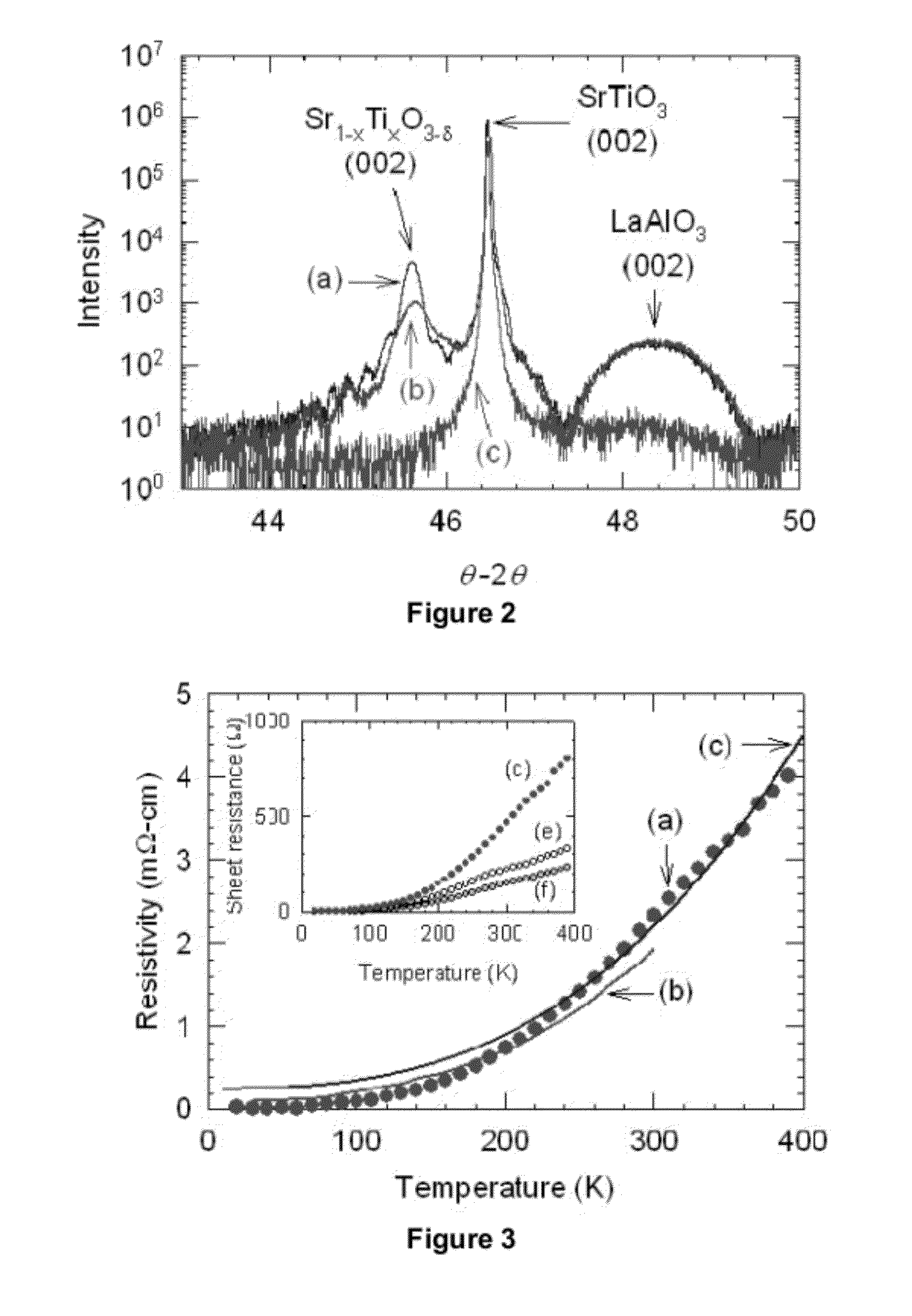Complex oxides useful for thermoelectric energy conversion
a thermoelectric energy and complex oxide technology, applied in the direction of oxide conductors, non-metal conductors, thermoelectric device manufacture/treatment, etc., can solve the problems of insufficient conversion efficiency of current thermoelectric materials based on bismuth telluride and/or semiconductors, inability of current thermoelectric systems to become widely used, toxic and hazardous popular thermoelectric materials tellurium and bismuth
- Summary
- Abstract
- Description
- Claims
- Application Information
AI Technical Summary
Benefits of technology
Problems solved by technology
Method used
Image
Examples
example 1
[0050]SrTiO3 (STO) is a cubic perovskite (Pm3m) with a bulk lattice parameter of 3.9056 Å. Out-of-plane lattice parameters of the films were characterized via x-ray diffraction using a Panalytical X'Pert MRD Pro 4-circle diffractometer for θ-2θ and rocking curve (ω) scans. All SLTO films grown were slightly distorted (˜1%) with the c-axis measuring 3.946 Å for typical 100 nm thick films.
[0051]TEM characterization and electron energy-loss spectroscopy (EELS) were performed on an FEI Tecnai F20 equipped with a high-angle annular dark-field (HAADF) detector. The quasi-homoepitaxial films (αSLTO bulk=3.9057 Å) exhibited smooth surfaces and flat interfaces with the substrate, and maintained uniform thicknesses through the entire specimen. STEM EELS was performed across the SLTO / STO interface with an energy resolution of 0.7 eV.
[0052]In addition, RHEED pattern intensity oscillations of the STO 001 peak were visible throughout the growth of films to thicknesses of nearly 200 nm.
Targets, Su...
example 2
[0058]A laser molecular beam epitaxy (MBE) is used to deposit 50-nm-thick Lanthanum-doped SrTiO3 films from a target containing SrO, TiO2, and La2O3 on 5 mm×5 mm×500 μm single-crystalline SrTiO3 substrates with a 10-nm-thick LaAlO3 buffer layer. During the deposition, the substrate is kept at a temperature and a vacuum pressure of 450° C. and ˜10−7 Torr, respectively. The sample is cooled at about 10° C. / min and the pressure is maintained throughout the entire process. The laser energy density, the repetition rate, and the deposition rate are ˜1.6 J / cm2, and 1 Hz, respectively. The vacuum pressure is high enough to produce oxygen-deficient, Sr1-xLaxTiO3-δ (δ>0) films. The substrate is prepared by depositing a fully strained 10-nm LaAlO3 buffer layer on TiO2-terminated (001) SrTiO3 at 850° C. and ˜0.75×10−4 Torr. When the substrate is cooled after the LaAlO3 deposition, oxygen is purged into the chamber till atmospheric pressure. This minimize the oxygen vacancies that might be creat...
PUM
| Property | Measurement | Unit |
|---|---|---|
| thickness | aaaaa | aaaaa |
| metal-like conductivity | aaaaa | aaaaa |
| thickness | aaaaa | aaaaa |
Abstract
Description
Claims
Application Information
 Login to View More
Login to View More - R&D
- Intellectual Property
- Life Sciences
- Materials
- Tech Scout
- Unparalleled Data Quality
- Higher Quality Content
- 60% Fewer Hallucinations
Browse by: Latest US Patents, China's latest patents, Technical Efficacy Thesaurus, Application Domain, Technology Topic, Popular Technical Reports.
© 2025 PatSnap. All rights reserved.Legal|Privacy policy|Modern Slavery Act Transparency Statement|Sitemap|About US| Contact US: help@patsnap.com



